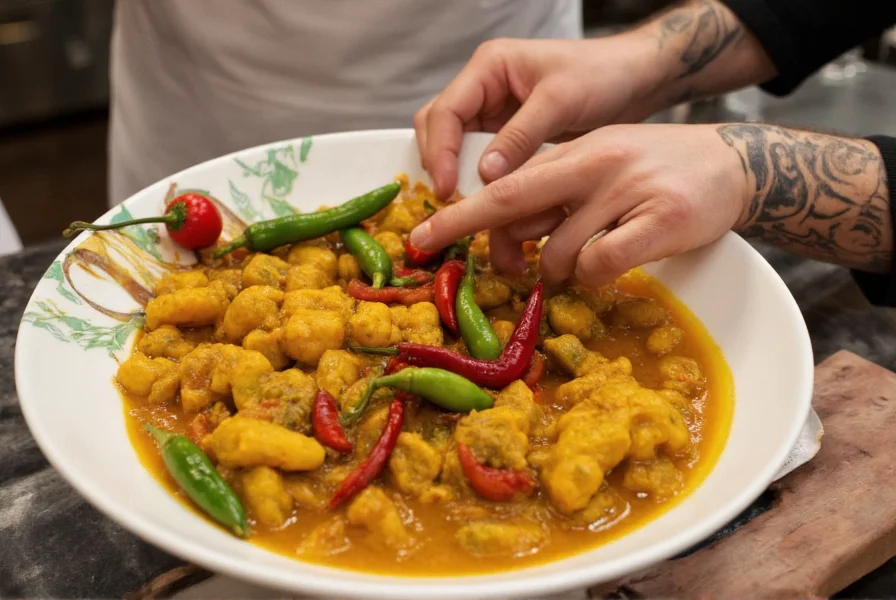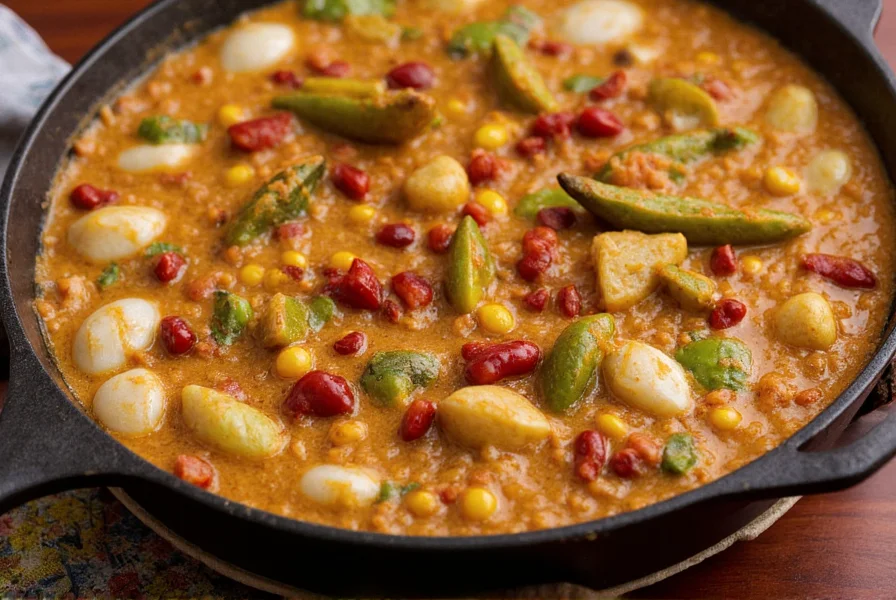The term "new chili and curry" refers to innovative chili pepper varieties recently developed or discovered that are transforming traditional curry dishes with unique flavor profiles and heat levels. These include hybrids like the Carolina Reaper derivatives, Dragon's Breath chili, and milder but aromatic varieties such as the Trinidad Perfume, which offer chefs and home cooks exciting options beyond standard curry ingredients.
Curry cuisine continues to evolve as breeders develop novel chili varieties that expand the flavor possibilities of this beloved dish. While traditional curries rely on established peppers like Thai bird's eye or Kashmiri chilies, a new generation of peppers is making its way into curry pots worldwide. These innovations aren't just about extreme heat—they offer complex flavor notes that complement curry spices in unexpected ways.
Emerging Chili Varieties for Contemporary Curry Dishes
Today's culinary landscape features several noteworthy chili varieties that have gained attention in curry applications. The Pepper X hybrid, currently vying for the "world's hottest" title, delivers not just intense heat but also subtle fruity notes that work surprisingly well in certain curry applications when used sparingly. Meanwhile, the Trinidad Moruga Scorpion Yellow offers tropical fruit undertones that pair beautifully with coconut-based curries.
For those seeking less intense heat, newer mild varieties like the Aji Charapita (a tiny Peruvian pepper) provide intense citrus and floral notes without overwhelming spice. These "new chili and curry" combinations allow for more nuanced flavor development rather than just heat intensity.
| Chili Variety | Scoville Units | Flavor Profile | Best Curry Type |
|---|---|---|---|
| Carolina Reaper Hybrid | 1,600,000-2,200,000 | Fruity, sweet, then intense heat | Experimental fusion curries |
| Dragon's Breath | 2,480,000 | Citrusy with floral notes | Special occasion dishes |
| Trinidad Perfume | 1,500-2,000 | Smoky, sweet, bell pepper-like | Mild Indian or Japanese curries |
| Aji Charapita | 30,000-50,000 | Intense citrus, floral | Peruvian-Japanese fusion curries |
Flavor Integration: Beyond Just Heat
When incorporating new chili varieties into curry dishes, understanding their flavor profiles beyond Scoville units becomes crucial. The best new chilies for Thai curry, for instance, aren't necessarily the hottest options but those that complement traditional Thai flavors. The recently developed "Thai Dragon" hybrid offers the familiar heat of bird's eye chilies but with enhanced citrus notes that intensify the dish's aromatic profile.
Professional chefs experimenting with new curry recipes with exotic chilies emphasize the importance of timing. Extremely hot varieties like Pepper X should be added at the very end of cooking or infused as oil to control heat distribution. Milder new varieties such as the Bolivian Rainbow can be incorporated earlier to allow their complex flavors to meld with other curry ingredients.

Practical Applications for Home Cooks
For home cooks interested in exploring where to buy new chili varieties, specialty online retailers and farmers' markets increasingly carry these options. When first experimenting with new chili and curry combinations, start with small quantities—particularly with super-hot varieties. A single Carolina Reaper hybrid seed can dramatically alter a curry's heat profile.
One effective technique for using extremely hot chilies in curry is to infuse them in oil first, then remove the peppers before adding other ingredients. This extracts flavor without overwhelming heat. For those seeking milder new chili peppers for curry, varieties like the Medusa pepper offer beautiful color and moderate heat with berry-like undertones that complement tomato-based curries.
Safety Considerations with New Super-Hot Varieties
Working with the newest super-hot chili varieties requires proper safety precautions. Always wear gloves when handling peppers like Dragon's Breath, and avoid touching your face. If cooking with these extremely hot varieties, ensure proper ventilation as the capsaicin can become airborne. Never use super-hot chilies in dishes for children or those with sensitive palates without clear warning.
When adjusting heat levels in curry featuring new chili varieties, remember that dairy products like yogurt or coconut milk help neutralize capsaicin, while acidic ingredients like lime juice can actually intensify the perceived heat. Understanding these interactions is essential for perfecting new curry recipes with exotic chilies.
The Future of Chili Innovation in Curry Cuisine
Breeding programs worldwide continue developing new chili varieties specifically for curry applications. Researchers in Thailand are crossbreeding local varieties with fruitier notes, while Indian agricultural institutes focus on chilies that maintain flavor integrity during prolonged cooking. These developments promise even more exciting options for where to buy new chili varieties in the coming years.
The most promising trend involves chilies engineered for specific curry types—such as varieties that enhance turmeric's bioavailability or that complement particular spice blends. As these new chili and curry combinations become more accessible, home cooks and professional chefs alike will continue expanding the boundaries of this ancient culinary tradition.
What are the safest new chili varieties for beginners experimenting with curry?
For beginners, mild new chili varieties like the Trinidad Perfume (1,500-2,000 SHU) or Medusa pepper (1,000-2,000 SHU) offer interesting flavor profiles without overwhelming heat. These provide subtle smoky and sweet notes that enhance curry dishes while remaining approachable for those new to cooking with chilies.
How can I reduce the heat from super-hot new chilies in my curry without losing flavor?
To reduce heat while preserving flavor when using super-hot new chilies, remove seeds and membranes (where most capsaicin resides), infuse the chili in oil then remove it, or add dairy products like coconut milk or yogurt at the end of cooking. Acidic ingredients like tomatoes can intensify heat, so add them early to mellow their effect.
Which new chili varieties work best with traditional Indian curry recipes?
For traditional Indian curries, newer varieties like the Guntur Sannam S4 hybrid offer the familiar heat profile of standard Indian chilies but with enhanced floral notes. The Kashmiri Long hybrid provides deep red color without excessive heat, making it ideal for butter chicken and other Mughlai dishes where appearance matters as much as flavor.
Can I grow these new chili varieties at home for my curry recipes?
Yes, many new chili varieties can be grown at home with proper conditions. Mild varieties like Trinidad Perfume and Aji Charapita adapt well to container gardening. Super-hot varieties like Carolina Reaper hybrids require more attention to soil conditions and temperature but can thrive in warm climates. Start seeds indoors 8-10 weeks before your last frost date for best results.
How do I properly store new chili varieties for curry preparation?
Store fresh new chili varieties in a paper bag in the vegetable crisper drawer of your refrigerator for up to three weeks. For longer storage, freeze whole peppers on a baking sheet before transferring to freezer bags—they'll remain usable for curry dishes for 6-8 months. Drying is another excellent option; string peppers and hang in a warm, dry place until completely dehydrated, then store in airtight containers.











 浙公网安备
33010002000092号
浙公网安备
33010002000092号 浙B2-20120091-4
浙B2-20120091-4